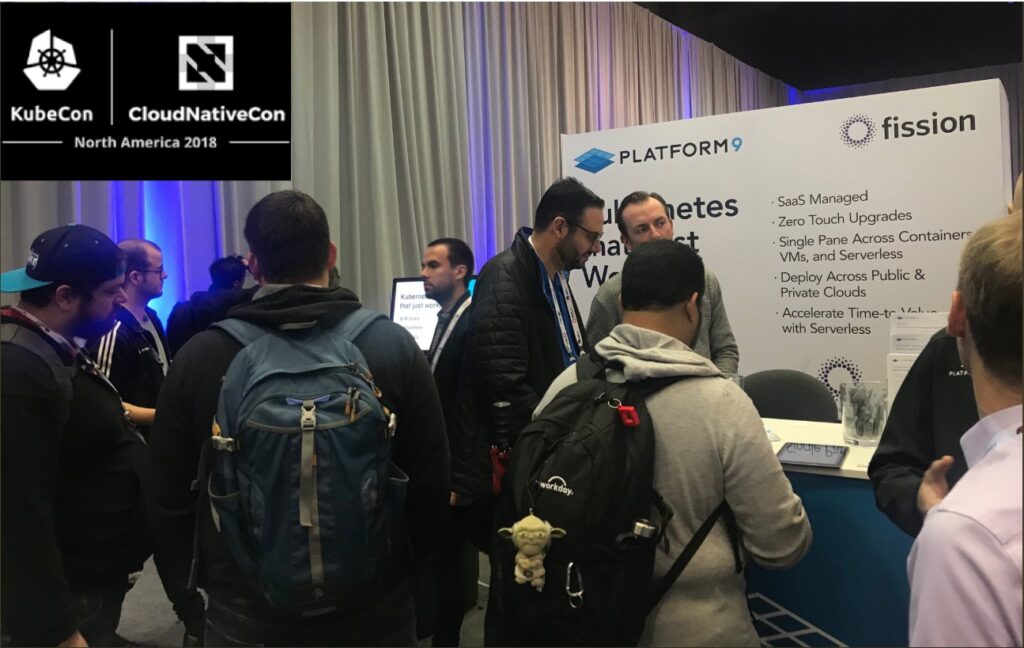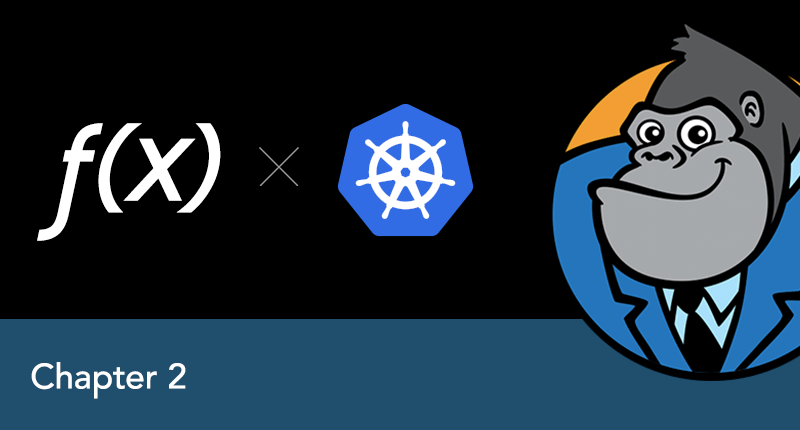
I had just returned from KubeCon + CloudNativeCon 2018, which was held this week in Seattle, WA. The 8,000 attendees gathered at the conference (up from around 4,000 just last year!) are a huge testament to the growing adoption, maturation, and impact of Kubernetes in the enterprise.
Kubernetes is not only here to stay — it is becoming the de-facto standard for modern, cloud-native applications and will be the underlying technology for how we deliver software for years to come. The momentum is incredible, as organizations of all sizes look to Kubernetes to transform and future-proof the way they deliver software.
It was exhilarating to connect with like-minded K8s-enthusiasts, community contributors, and organizations across a wide range of industries – to learn how they are betting on Kubernetes to take their software delivery to the next level, what are some of the challenges operating Kubernetes for mission-critical application, and some of the use cases and amazing things they are doing with Kubernetes in the enterprise today.
Another great day at #KubeCon! Thanks to everyone who has come to say hello – it’s been wonderful to connect with this amazing community | @KubeCon_ pic.twitter.com/5KfRl5iYRO
— Platform9 Systems (@Platform9Sys) December 13, 2018
Great to meet our customer from @ProvHealthNews at #KubeCon 🤝@KubeCon_ pic.twitter.com/mUI2V29QrY
— Platform9 Systems (@Platform9Sys) December 13, 2018
While at the show, we had more than 500 attendees complete our survey at the booth, to give us an insight into their use of Kubernetes. Let’s dig into some of the key findings from this year’s survey.
Who Cares About Kubernetes in the Enterprise?
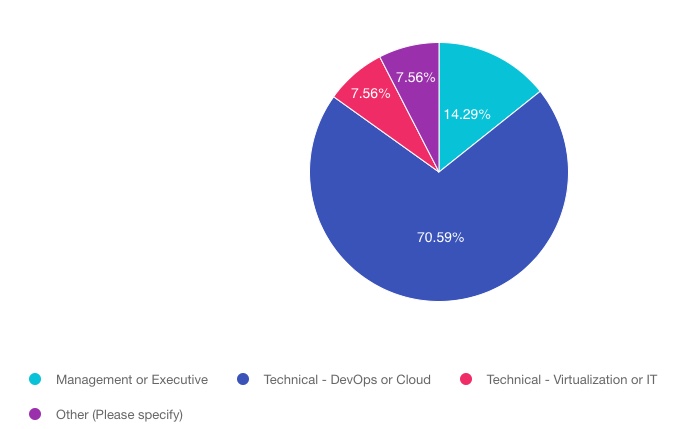
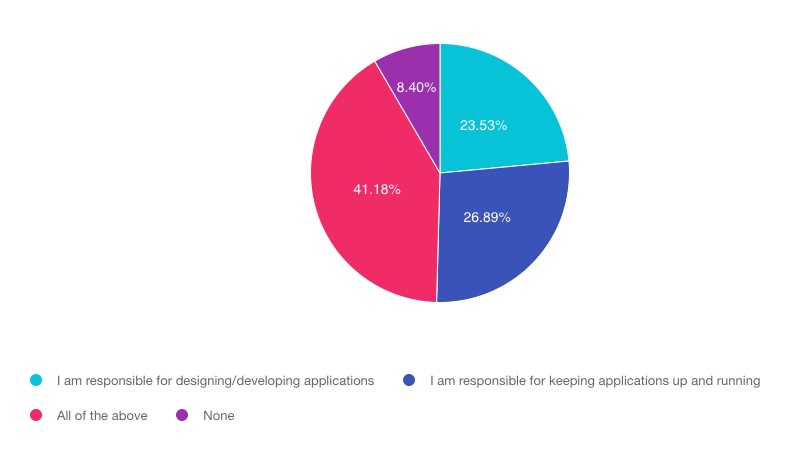
Kubernetes is truly bridging the world of Dev and Ops. An almost equal percentage of respondents were responsible for designing and developing Kubernetes-based application, or operating these applications and making sure they run smoothly in production. In addition, 41% identified themeselves as responsible for both the Dev and the Ops side of these applications – demonstrating that Kubernetes is truly blurring the lines between development and operations.
Enterprise Kubernetes Use Cases: Microservices, VM replacement, and FaaS
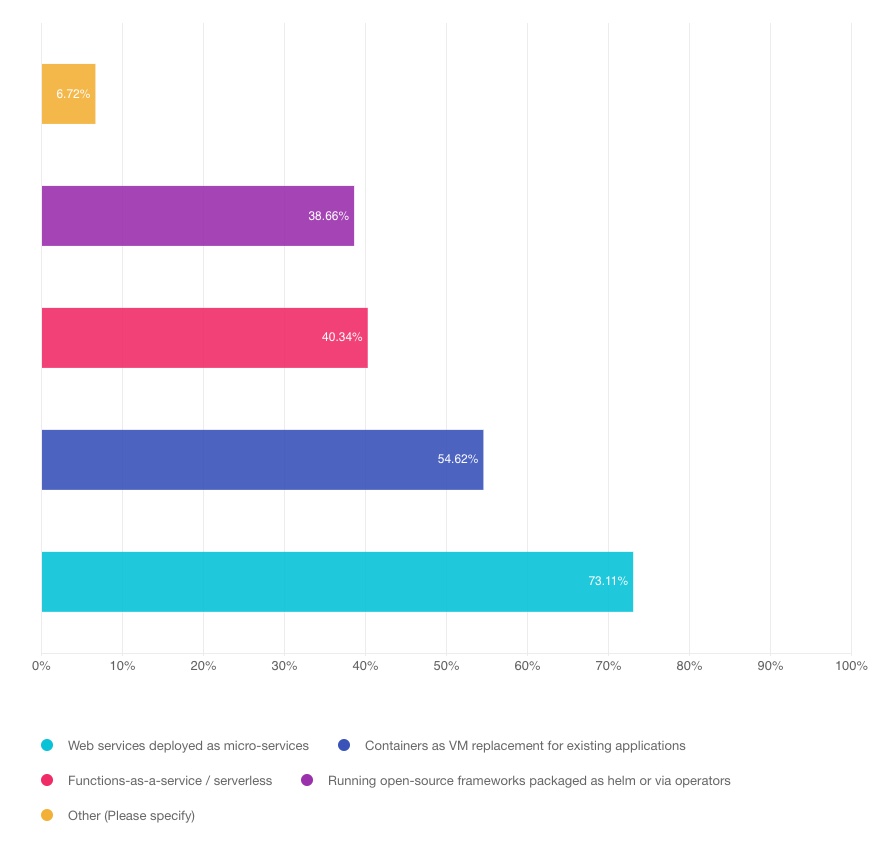
As you would expect, running web services deployed as microservices was the most popular use case, with 73% of respondents using Kubernetes as the optimal infrastructure for SOA-based architectures. The use of containers as a more efficient alternative to virtual machines, with a total of nearly 55%, was the 2nd use case, followed by Serverless applications and Functions-as-a-service with 40% of respondents (not surprisingly given how Kubernetes is the ideal infrastructure for running Serverless applications), followed by Helm and Operators with a close 39% of the votes.
Where is Kubernetes Running?
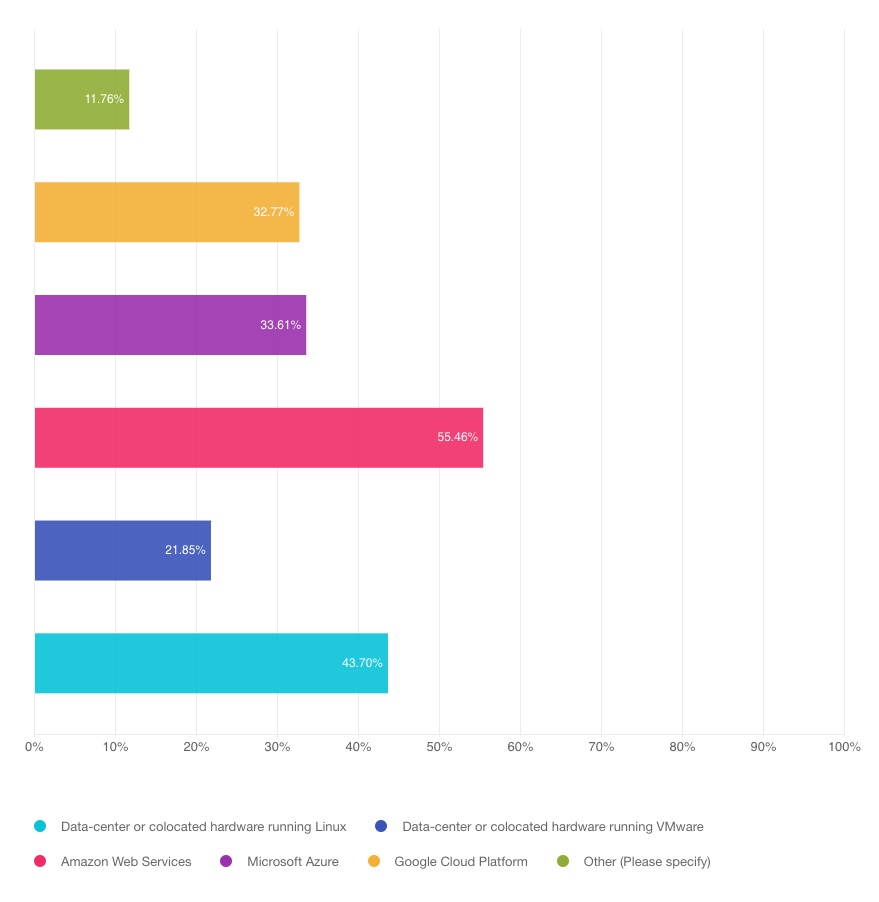
It was interesting to see that 65% of respondents need to run enterprise Kubernetes deployments on on-premises infrastructure, either Linux-based (43.70%) or atop VMware (21.85%).
While AWS takes the lead among public cloud deployments with 55%, GCP and Azure are pretty much neck-in-neck fighting for 2nd place (33.61% and 32.77% respectively).
Another interesting finding was that enterprises today run hybrid, mixed environment- with the majority of respondents operating Kubernetes on BOTH on-prem and public cloud infrastructure. This is another evidence that the multicloud is already the norm in the enterprise. With the number of different, mixed environments (private/public cloud as well as at the edge) projected to continue to grow in the future, ensuring portability, interoperability, consistent management of K8s across types of infrastructure, and ensuring no lock-in — would all become even more critical for enterprises in 2019.
Using new and emerging cloud-native technologies
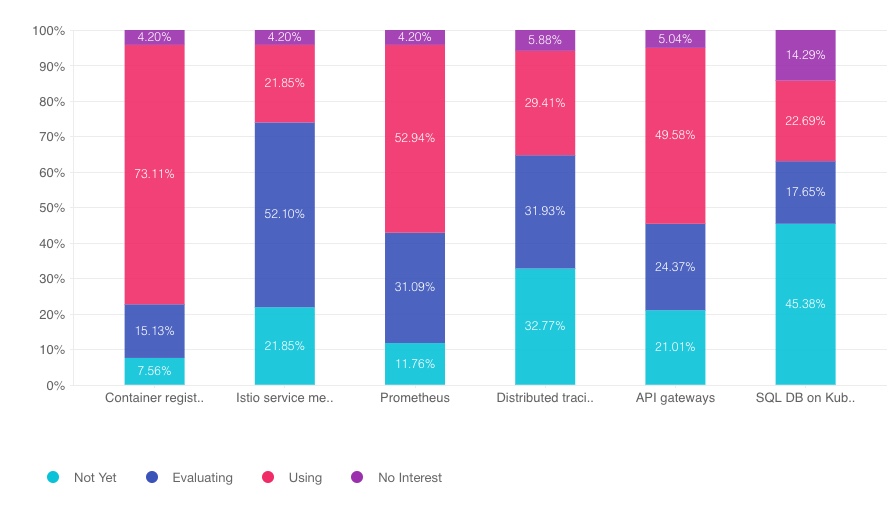
Container Registries (73.11%), Prometheus (52.94%) and API gateways (49.58%) were the top 3 new technologies used by the Kubernetes community. Istio service mesh (52.10%), distributed tracking, such as Jaeger (31.93%) and Prometheus again (31.09%) are the top 3 technologies being evaluated.
While containers and Kubernetes initally started as being optimal for stateless applications, recent developments in Kubernetes storage now enable stateful, ACID applications runnning on containers. It is interesting to note, in that respect, that 17.65% of respondents are now looking into SQL databases for Kubernetes. This development means Kubernetes is becoming even more critical and an even more viable option for enterprise applications, including legacy ones, many of which require RDBMSs.
Top Concerns With Kubernetes and Cloud-Native Technologies
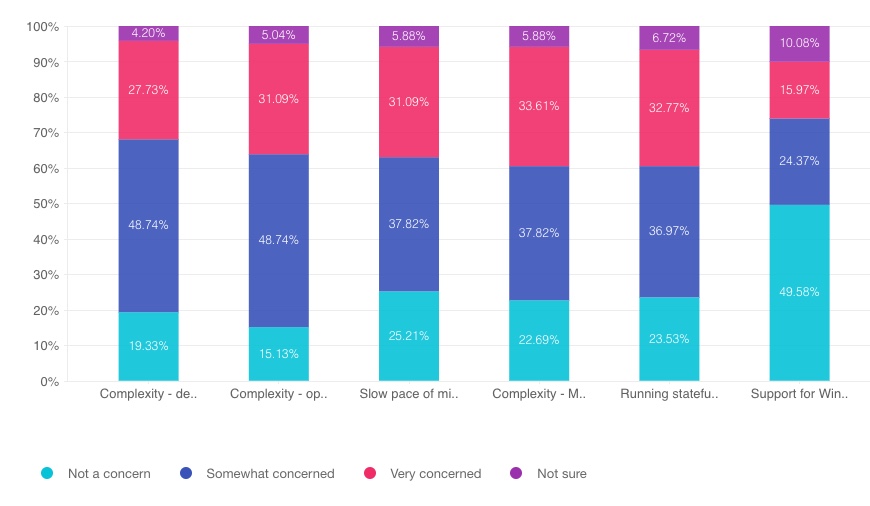
We surveyed attendees for their concerns with cloud-native technologies- specifically asking them to rank their concern level around:
- Complexity – Developers’ learning curve
- Complexity – Operations’ learning curve
- Complexity – Managing multi-cloud
- Slow pace of migrating existing apps to containers
- Running stateful or data-intensive workloads
- Support for Windows and.Net options
The top 3 concerns were:
- Managing multi-cloud (33.61%)
- Running stateful applications on Kubernetes (32.77%)
- The slow pace of migrating apps and the operational complexity of managing Kubernetes both ties at 3rd place with 31.09% each.
Summary (+Shameless Plug)
It was exhilarating to see the growth and momentum in the Kubernetes community, and how K8s is becoming indispensable for any digital transformation journey – for startups and large enterprises alike. The innovation in the space is awe-inspiring, but there are still a lot of challenges to overcome. Kubernetes is still difficult to run and operate at scale, particularly for multicloud/hybrid environments- spanning on-premises data centers and public cloud infrastructure.
 Platform9 provides an enterprise-grade Kubernetes-as-a-Service solution that just works: at scale, anywhere, instantly.
Platform9 provides an enterprise-grade Kubernetes-as-a-Service solution that just works: at scale, anywhere, instantly.
Platform9 Managed Kubernetes allows enterprises to run Kubernetes instantly, anywhere, reduce IT operational overhead and accelerate adoption and time to value with containers. It is the industry’s only SaaS-managed Kubernetes solution that is infrastructure agnostic, working across any public cloud or on-premises infrastructure. This fully-managed service eliminates the operational complexity in scaling Kubernetes for enterprise workloads by delivering it as a Service — with deployments, monitoring, upgrades, fault tolerance, and troubleshooting — all handled automatically, and backed by a 24x7x365 SLA.
Recent wins from large enterprises who have chosen Platform9’s solution also prove the growing adoption of Kubernetes in enterprises, as Fortune 500 organizations modernize their applications and infrastructure in order to enable their cloud journeys and stay competitive in today’s digital economy.
Learn more about our Managed Kubernetes solution.
